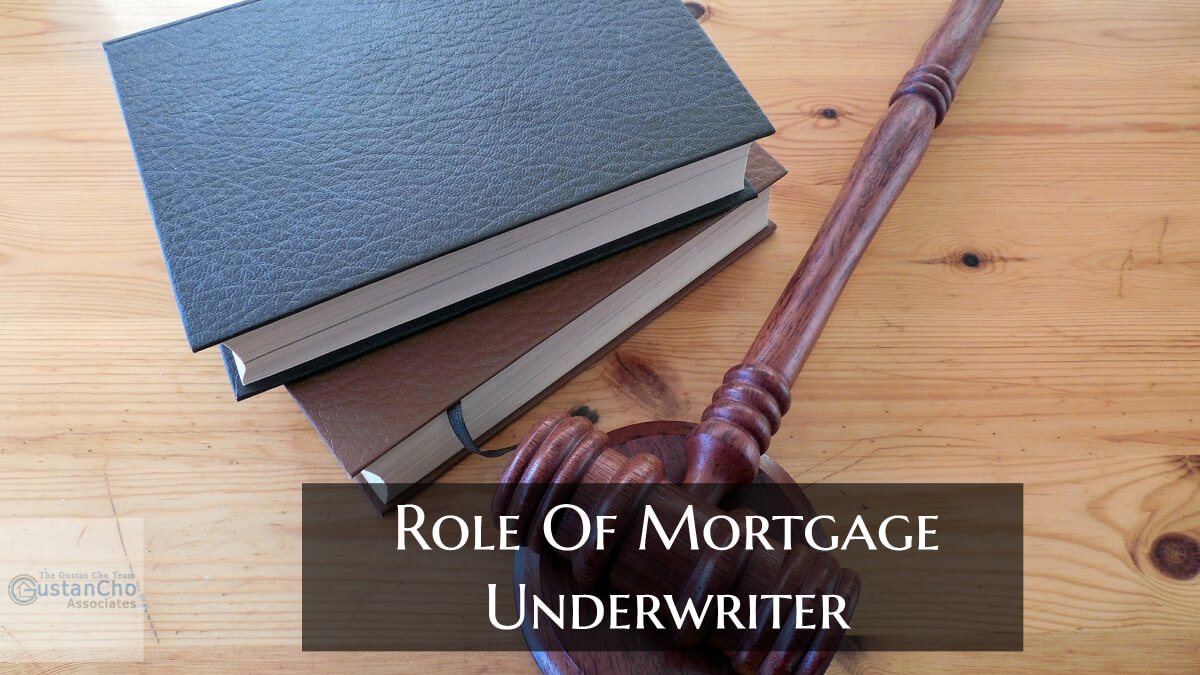Role of a Mortgage Underwriter
In this blog, we will cover and discuss the role of a mortgage underwriter during the mortgage loan application and approval process. There are many mortgage professionals that will be involved in a mortgage loan applicant’s mortgage approval process. The mortgage loan applicant first deals with the mortgage loan originator and first qualifies the client whether the mortgage applicant is qualified and meets all mortgage lending guidelines.
The Mortgage Loan Application Process
Once the mortgage loan originator runs credit and reviews the mortgage application, the mortgage loan originator requests the documents needed to get the loan processed. The mortgage loan processor then reviews all data collected by the mortgage loan originator and prepares the mortgage package. If there is anything missing, the mortgage processor contacts the mortgage loan applicant. The mortgage processor’s job is to get everything ready to submit to the mortgage loan underwriter.
Who Issues The Clear To Close in the Mortgage Process
The mortgage loan underwriter is the most important person in the mortgage loan approval process and he or she is the person that decides whether the mortgage loan gets approved or not and he or she is the person who will issue a clear to close, which is the clearance to fund the mortgage loan. The mortgage borrower will never have contact with the mortgage loan underwriter. A mortgage loan underwriter has a lot of power and it will be the underwriter’s discretion whether a borderline loan gets approved or not.
Qualification Of Mortgage Loan Applicant
It is the mortgage loan originator that initially qualifies the mortgage loan applicant with regard to income, credit score, credit payment history, debt, and assets. The loan officer needs to determine whether the borrower meets mandatory federal lending guidelines as well as the mortgage lender’s own lending guidelines.
The Role of the Mortgage Processor
The mortgage loan processor’s job is to make sure that all of the information on the mortgage application is verified. The mortgage processor’s responsibilities are getting the two years tax returns, two years’ W-2s, 60 days bank statements, recent paycheck stubs, verification of employment, letters of explanation, sources of irregular deposits, down payment verification, public records documentation if it applies to the mortgage loan applicants such as bankruptcy paperwork, foreclosure documentation, short sale documents, divorce papers, child support statements, asset information such as 401k statements, letters of explanations and other necessary documents.
What Is The Most Important Part of Mortgage Processing
The mortgage processor’s function is to have as complete a file as possible so the mortgage loan underwriter gets a complete whole overall picture of the mortgage loan applicant. If the file is not complete and the mortgage loan underwriter does not have documents or has missing pages on documents that he or she needs, the mortgage loan underwriter will stop working on the file and kick it back to processing and this is how mortgage loan approvals and mortgage closings get delayed.
How Mortgage Loan Applications Get Delay in the Mortgage Process
The mortgage loan underwriter will not waste his or her time trying to figure out an incomplete mortgage loan application. If the mortgage application is hard to understand due to the applicant having extenuating circumstances, then a detailed letter of explanation needs to be provided along with the mortgage application.
Making Sure That Borrower Meets Lending Guidelines
The role of a mortgage underwriter is to verify and see documentation of every item that proves that the mortgage loan applicant is able to afford his or her new home mortgage payment as well as his or her other expenses. The role of a mortgage underwriter is to make sure that the mortgage applicant meets all federal mortgage lending guidelines as well as the mortgage lender’s own mortgage lending guidelines.
Home Appraisal Underwriting Process
The role of a mortgage underwriter is to make sure that the property appraises and that all the property tax, title insurance, homeowners insurance, and closing documents are in order and in place. The role of a mortgage underwriter is to make sure that the mortgage loan he or she approves does not default and that there is no fraud involved or that the mortgage underwriter can lose their job. Most mortgage lenders do not overturn a mortgage underwriter’s denial.
Automated Underwriting System Versus Manual Underwriting
The role of a mortgage underwriter is to oversee every document of the borrower and make sure the borrower meets all agency guidelines as well as the mortgage lender overlays. Most mortgage companies will not issue a mortgage loan pre-approval without running the mortgage application through Fannie Mae’s or Freddie Mac’s Automated Underwriting System. Fannie Mae’s Automated Underwriting System is known as DU FINDINGS and FREDDIE MAC’s Automated Underwriting System is known as LP FINDINGS.
What Is An Approve/Eligible Per Automated Underwriting System
An approve/eligible is required per DU FINDINGS and/or LP FINDINGS. In order to proceed to process the mortgage loan application and for the mortgage loan approval process to go forward, an automated approval is necessary. In the event, that the mortgage loan applicant gets referred/eligible, it means that the Automated Underwriting System cannot issue an automated approval. A mortgage loan underwriter needs to review the whole mortgage loan file manually on refer/eligible findings.
Manual Underwriting Mortgage Guidelines
The role of a mortgage underwriter is to use the underwriter’s discretion power in evaluating manual underwriting files. The mortgage lender can proceed with a manual underwriting loan approval process. When a mortgage loan application falls into a gray area and the Automated Underwriting System cannot determine the qualification of the mortgage loan applicant, the mortgage lender can do a manual underwrite.
Importance Of Compensating Factors on Manual Underwriting
Mortgage loan underwriters who do manual underwrites look for compensating factors. The mortgage loan underwriter needs to be convinced that the mortgage loan applicant is a good credit risk before he or she will issue a mortgage loan approval on a manually underwritten mortgage loan application.
Debt-To-Income Ratio Guidelines on Manual Underwriting
Compensating factors include higher than required down payments, substantial reserves, rental verification, long term on the job or a job that offers room for advancement for the mortgage loan applicant, and other positive factors such as the mortgage loan applicant having additional income but the income not being counted on his or her debt to income ratio qualification.
Manual Underwriting Mortgage Process
The role of a mortgage underwriter is to make sure the borrower has the ability to repay. A mortgage loan underwriter who performs a manual underwrite will definitely scrutinize a mortgage loan application that is a manual underwrite because if the mortgage loan ever defaults, it will be the responsibility of the mortgage loan underwriter. Mortgage companies depend on their mortgage loan underwriters to scrutinize mortgage loan applications and minimize the risk of default. Substantial mortgage loan defaults can shut down a mortgage company and bring on scrutiny from state and federal mortgage regulators. The role of a mortgage underwriter is the backbone of the mortgage lender.







